corwin_of_amber
Regular

Armenian Kingdom of Cilicia (InComplete) (troop trees need expanding)
Capital: Sis
Government Type: Monarchy
Friends with: France, Holy Roman Empire, Knights Hospitaller
Trade agreement with: Pisa, Genoa, Venice, France, the Catalans.
Unfriendly with: Byzantine, Ayubids, Knights Templar
Hostile with: Seljuk Sultanate of Rum, Crusader Principality of Antioch.
Map1:
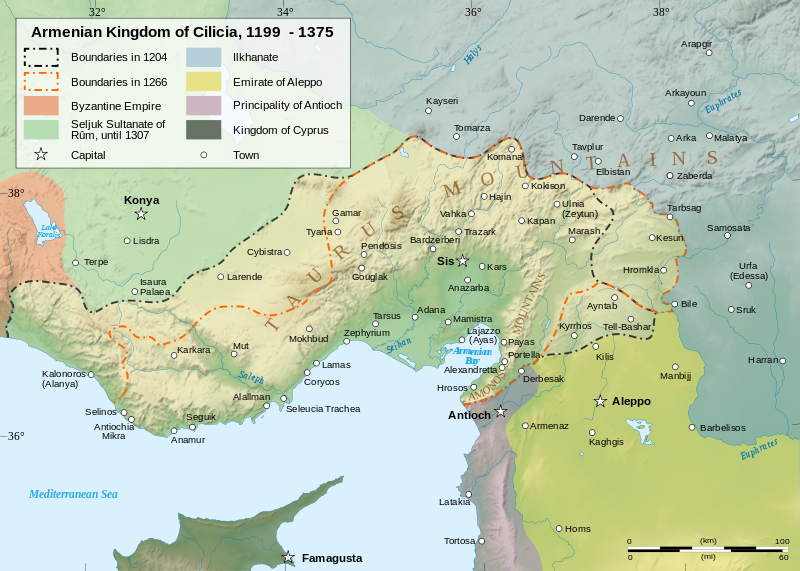 Map2:
Map2:
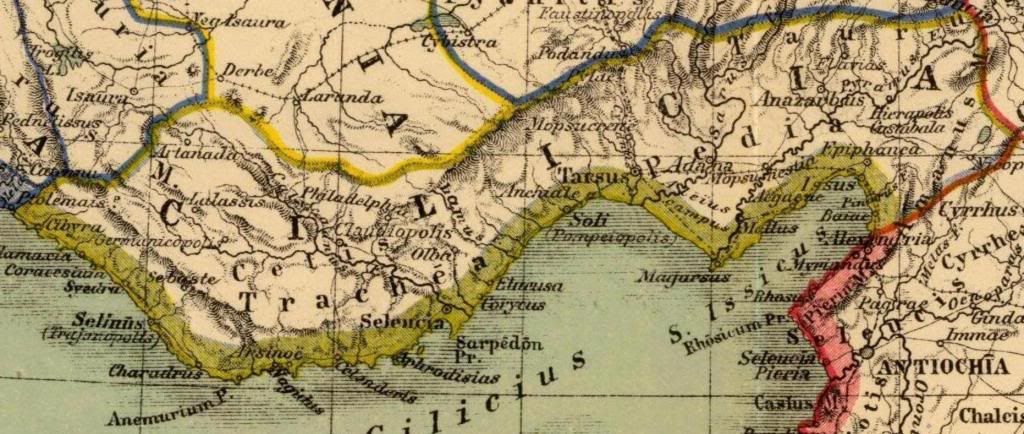 Map3:
Map3:
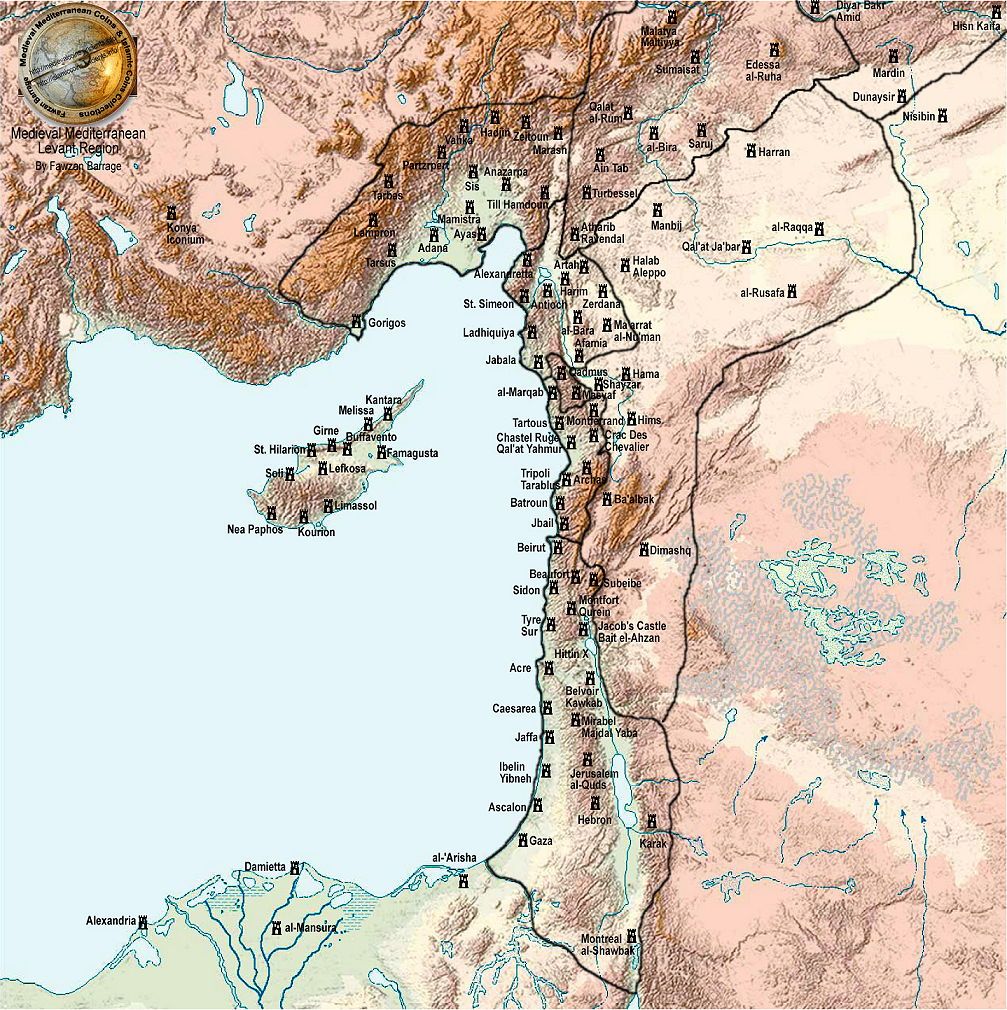
Religion: Armenian Apostolic Church (branch of Orthodox Christianity)
Standard of the apostolic church:
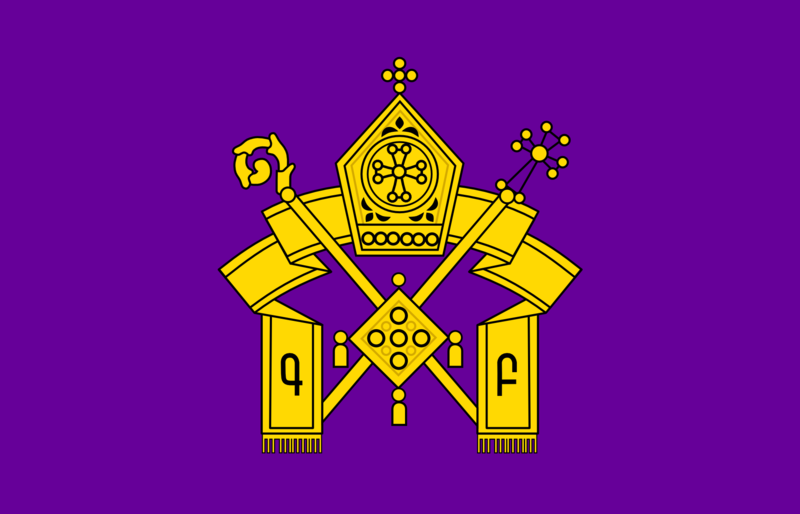
Flag:
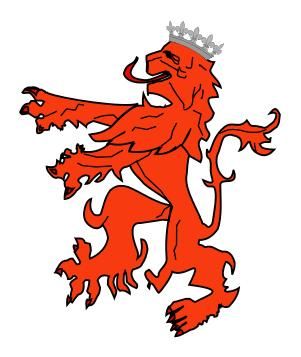 Coat of Arms:
Coat of Arms:
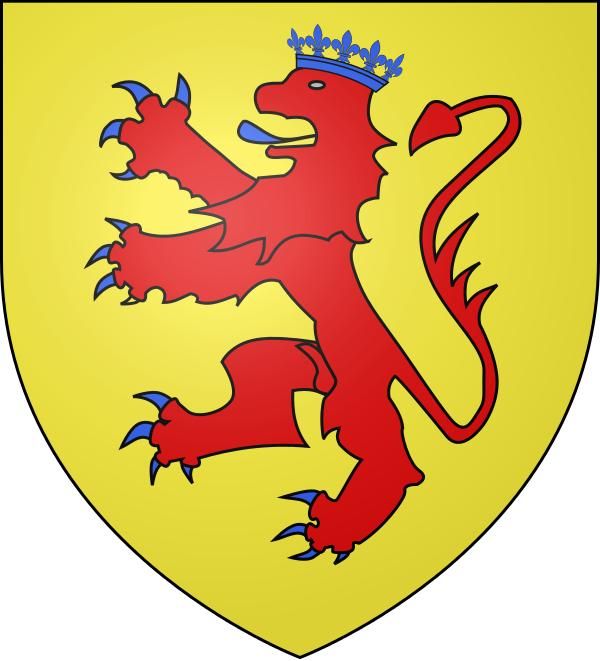
Monarch: Levon I the Magnificent (highly effective leader) (House: Rouben)
Claimant: none
Lords: (source: http://fmg.ac/Projects/MedLands/ARMENIA.htm#_Toc184469958)
Armenian Coat of Arms for individual lords:
Flag of Ayas:
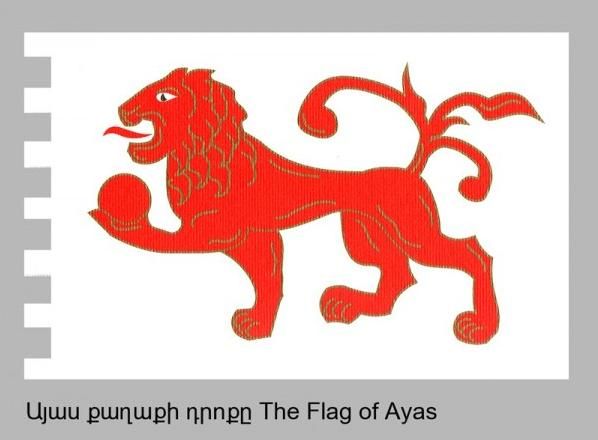 Flag of Tarsus:
Flag of Tarsus:
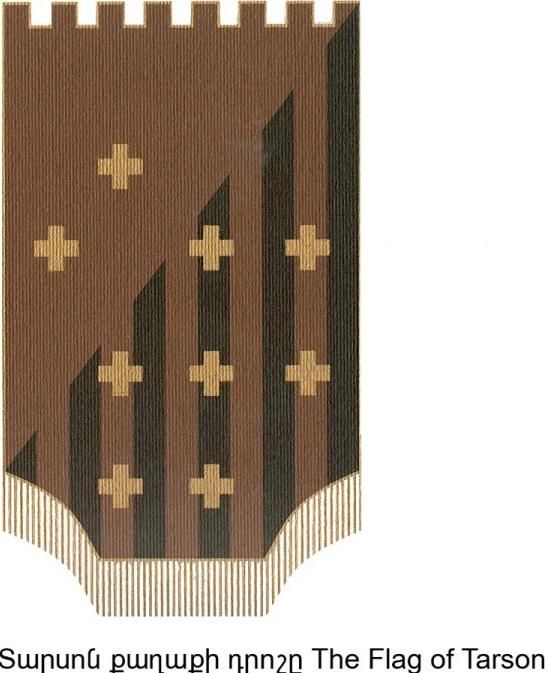 Flag of Corycos:
Flag of Corycos:
 Flag of Hethumyans:
Flag of Hethumyans:
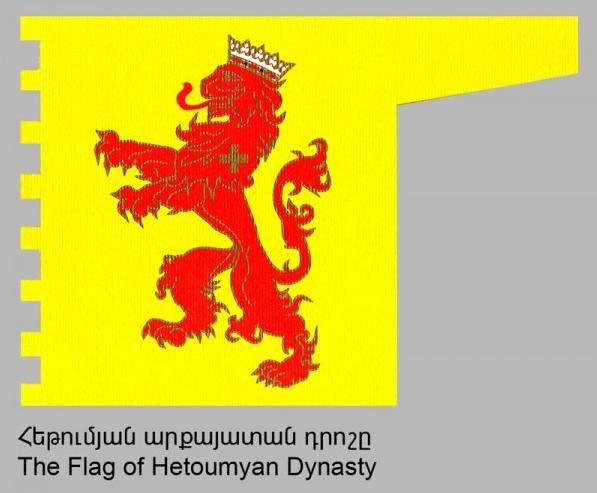 Flag of Lamos:
Flag of Lamos:
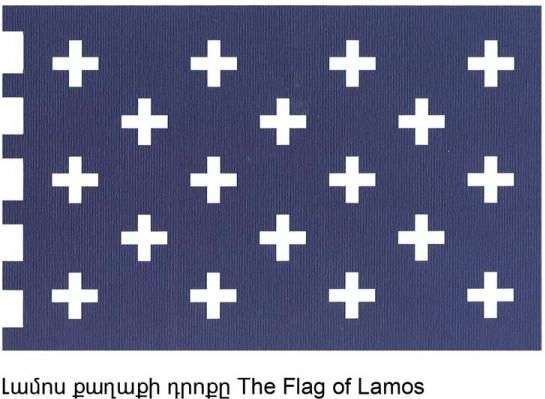 Other Armenian Heraldic Flags from the period:
Other Armenian Heraldic Flags from the period:
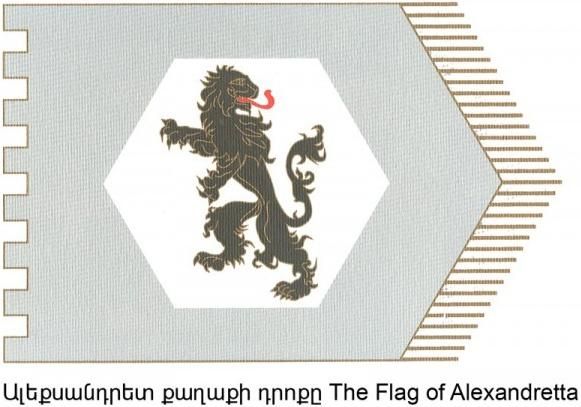
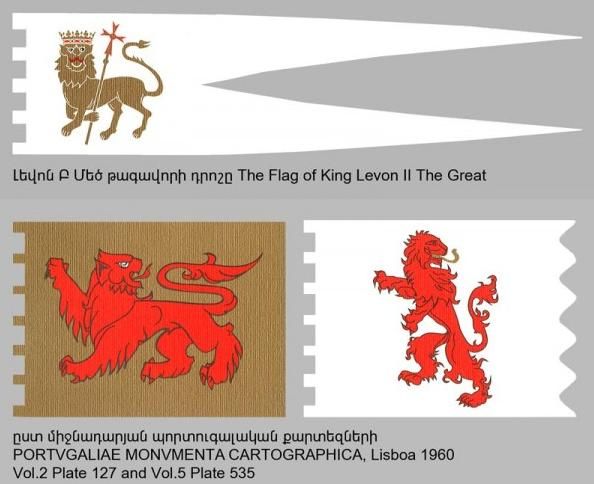

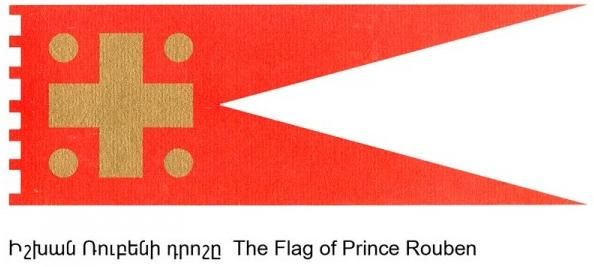 General Info:
General Info:
Culture:
Adopted many aspects of western European life including chivalry, fashion, western feudalism as compared to the traditional nakharar system.
During the Cilician period, Western titles such as baron and constable replaced their Armenian equivalents nakharar and sparapet. European tradition was adopted for the knighting of Armenian nobles, while jousts and tournaments similar to those in Europe had become popular in Cilician Armenia.
Most Armenian castles made atypical usage of rocky heights, and featured curved walls and round towers, similar to those of the Hospitaller castles Krak des Chevaliers and Marqab.
Economy: (Prosperous especially during the reign of king Levon)
The kingdom was important in spice trade, among other goods such as livestock, hides, wool, and cotton. Other important resources such as timber, grain, wine, raisins, and raw silk were also exported from the country.
Trade with west: Through port of Ayas
Main commercial centers: In Ayas, Tarsus, Adana, and Mamistra, important European merchant communities and colonies came into existence, with their own churches, courts of law, and trading houses.
The archbishops' seats were located in Tarsus, Sis, Anazarba, Lambron, and Mamistra.
Kingdom of Cilician Armenia Comprehensive Settlement List:
Custom Map1:
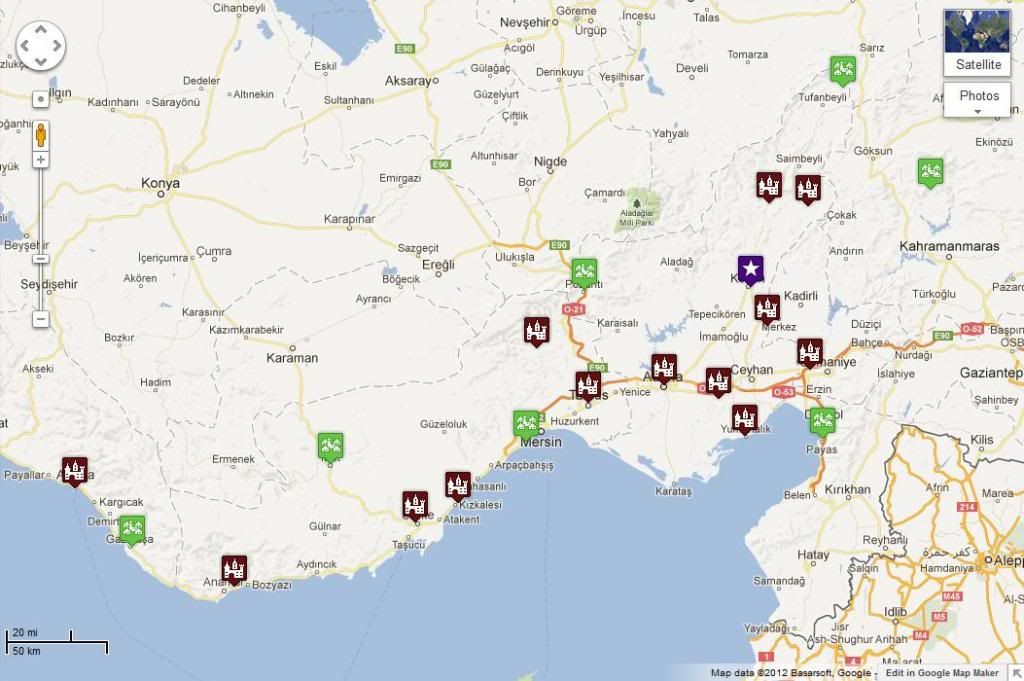 Custom Map2:
Custom Map2:
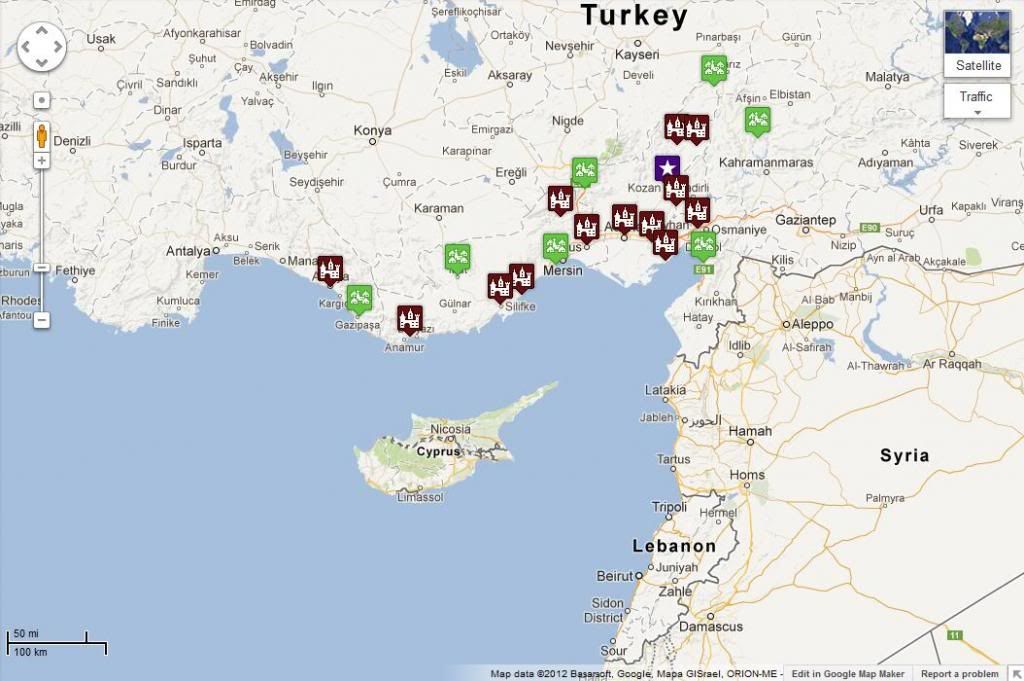
Army of the Kingdom of Cilician Armenia:
Cilician Armenians relied chiefly on bands of paid retainers (largely natives but including Turks, Persians, and Franks) and militia infantry. In equipment and organization Frankish influence soon come to predominate (particularly under King Levon I) and feudalism was introduced from neighboring Antioch, the titles Constable and Baron being adopted in place of the old Sparapet and Nakharar.
I made two rosters for this faction. One which is for the city/village and represents the militia and light infantry element of the cilician army. And another castle roster to represent noble/professional retainer standing army.
A large part of the info on army units were acquired from: http://www.twcenter.net/forums/showthread.php?t=90845&page=2
http://mjollnir.twcenter.net/forums/showthread.php?t=94710&page=2
Village/City Roster (Infantry)
Castle Roster: Noble/professional
Military Equipment:
That's it. Hope it's helpful. Now I will move onto working on the Ayubids and the Levant area, which will take time. I will also update the existing factions I worked on whenever I come across more info about them. If there is a gap in my research, please point it out so I can rectify it.
Happy New Year Everyone!
Capital: Sis
Government Type: Monarchy
Friends with: France, Holy Roman Empire, Knights Hospitaller
Trade agreement with: Pisa, Genoa, Venice, France, the Catalans.
Unfriendly with: Byzantine, Ayubids, Knights Templar
Hostile with: Seljuk Sultanate of Rum, Crusader Principality of Antioch.
Map1:



Religion: Armenian Apostolic Church (branch of Orthodox Christianity)
Standard of the apostolic church:

Flag:


Monarch: Levon I the Magnificent (highly effective leader) (House: Rouben)
Claimant: none
Lords: (source: http://fmg.ac/Projects/MedLands/ARMENIA.htm#_Toc184469958)
List of Lords:
King Levon I (married to Isabelle) (they have a daughter, Stephanie/Rita, but she is too young in 1200.)
Halgam, Lord of Anamur
Hethum III, Lord of Lampron (Bad relations with King Levon) (wife: Rita of Armenia. Daughter: Alix of Lampron)
Simon, Lord of Korykos
Kir Fard, lord of Kalonoros
Other Lords:
Paguran Lord of Barbaron
Vacahk Lord of Askuras
Kostandin Lord of Partzepert
Grigor also Lord of Berdus
Henri Lord of Camardias and Norpert (Bad relations with King Lewon)
Mikhael Lord of Berdak (Daughter Euphemia)
Smbat Lord of Saravantikar
King Levon I (married to Isabelle) (they have a daughter, Stephanie/Rita, but she is too young in 1200.)
Halgam, Lord of Anamur
Hethum III, Lord of Lampron (Bad relations with King Levon) (wife: Rita of Armenia. Daughter: Alix of Lampron)
Simon, Lord of Korykos
Kir Fard, lord of Kalonoros
Other Lords:
Paguran Lord of Barbaron
Vacahk Lord of Askuras
Kostandin Lord of Partzepert
Grigor also Lord of Berdus
Henri Lord of Camardias and Norpert (Bad relations with King Lewon)
Mikhael Lord of Berdak (Daughter Euphemia)
Smbat Lord of Saravantikar
Flag of Ayas:









Culture:
Adopted many aspects of western European life including chivalry, fashion, western feudalism as compared to the traditional nakharar system.
During the Cilician period, Western titles such as baron and constable replaced their Armenian equivalents nakharar and sparapet. European tradition was adopted for the knighting of Armenian nobles, while jousts and tournaments similar to those in Europe had become popular in Cilician Armenia.
Most Armenian castles made atypical usage of rocky heights, and featured curved walls and round towers, similar to those of the Hospitaller castles Krak des Chevaliers and Marqab.
Economy: (Prosperous especially during the reign of king Levon)
The kingdom was important in spice trade, among other goods such as livestock, hides, wool, and cotton. Other important resources such as timber, grain, wine, raisins, and raw silk were also exported from the country.
Trade with west: Through port of Ayas
Main commercial centers: In Ayas, Tarsus, Adana, and Mamistra, important European merchant communities and colonies came into existence, with their own churches, courts of law, and trading houses.
The archbishops' seats were located in Tarsus, Sis, Anazarba, Lambron, and Mamistra.
Kingdom of Cilician Armenia Comprehensive Settlement List:
Sis (City, Capital) (present day Kozan) (condition: prosperous with many vineyards and gardens) (Coordinates: 37.44161, 35.809751)
• Pendosis (coordinates: 37.426411,34.872222)
Tarsus (castle) (coordinates: 36.917646, 34.891863)
• Soli (coordinates: 36.741944,34.54)
Laiazzo/Ayas (castle) (modern day Yumurtalık) (condition: good, this was a port city through which all trade between Cilicia and Western Europe was done.) (coordinates: 36.770758,35.77752
• Payas (coordinates: 36.758622,36.215987)
Corycos (castle) (coordinates: 36.465278,34.154167)
• Mut (coordinates: 36.644182,33.436704)
Lampron (castle) (presented day Camliyayla) (coordinates: 37.166609,34.600139)
Anamur (castle) (coordinates: 36.080556,32.894444)
Vahka (present day Feke) (castle) (coordinates: 37.814946,35.911826)
• Komana (coordinates: 38.33,36.33)
Hadjin (present day Saimbeyli) (coordinates: 37.802324,36.136816)
• Ulunia/Zeitoun (present day Süleymanlı) (coordinates: 37.876944,36.82527
Adana (castle) (coordinates: 36.998714,35.321331)
Anazarba (castle) (coordinates: 37.263889,35.905556)
Til Hamdoun (castle) (present day Toprakkale) (coordinates: 37.066944, 36.146389)
Mamistra (castle) (coordinates: 36.938916,35.62932)
Kalonoros (castle) (modern day Alanya) (coordinates: 36.53321,31.99076)
• Selinos (coordinates: 36.26656,32.316706)
Seleucia (castle) (coordinates: 36.37651,33.91574)
Cities: 1
Castles: 13
Villages: 7
Total: 21 Settlements
• Pendosis (coordinates: 37.426411,34.872222)
Tarsus (castle) (coordinates: 36.917646, 34.891863)
• Soli (coordinates: 36.741944,34.54)
Laiazzo/Ayas (castle) (modern day Yumurtalık) (condition: good, this was a port city through which all trade between Cilicia and Western Europe was done.) (coordinates: 36.770758,35.77752
• Payas (coordinates: 36.758622,36.215987)
Corycos (castle) (coordinates: 36.465278,34.154167)
• Mut (coordinates: 36.644182,33.436704)
Lampron (castle) (presented day Camliyayla) (coordinates: 37.166609,34.600139)
Anamur (castle) (coordinates: 36.080556,32.894444)
Vahka (present day Feke) (castle) (coordinates: 37.814946,35.911826)
• Komana (coordinates: 38.33,36.33)
Hadjin (present day Saimbeyli) (coordinates: 37.802324,36.136816)
• Ulunia/Zeitoun (present day Süleymanlı) (coordinates: 37.876944,36.82527
Adana (castle) (coordinates: 36.998714,35.321331)
Anazarba (castle) (coordinates: 37.263889,35.905556)
Til Hamdoun (castle) (present day Toprakkale) (coordinates: 37.066944, 36.146389)
Mamistra (castle) (coordinates: 36.938916,35.62932)
Kalonoros (castle) (modern day Alanya) (coordinates: 36.53321,31.99076)
• Selinos (coordinates: 36.26656,32.316706)
Seleucia (castle) (coordinates: 36.37651,33.91574)
Cities: 1
Castles: 13
Villages: 7
Total: 21 Settlements
Custom Map1:


Army of the Kingdom of Cilician Armenia:
Cilician Armenians relied chiefly on bands of paid retainers (largely natives but including Turks, Persians, and Franks) and militia infantry. In equipment and organization Frankish influence soon come to predominate (particularly under King Levon I) and feudalism was introduced from neighboring Antioch, the titles Constable and Baron being adopted in place of the old Sparapet and Nakharar.
I made two rosters for this faction. One which is for the city/village and represents the militia and light infantry element of the cilician army. And another castle roster to represent noble/professional retainer standing army.
A large part of the info on army units were acquired from: http://www.twcenter.net/forums/showthread.php?t=90845&page=2
http://mjollnir.twcenter.net/forums/showthread.php?t=94710&page=2
Village/City Roster (Infantry)
Shinakan Levy
I
Ramik Infantry
/ \
Ramik mountaineers/Cilician Guard Armenian Archers
I I
Vet. Cilician Guard Vet. Armenian Archers
*Shinakan: a member of the main working population of early medieval Armenia. The shinakans were originally legally free. In Armenian sources of the fourth and fifth centuries, they are contrasted to the azats (the privileged class). The shinakans had smaller fines to pay for violating church rules than did the azats, but unlike the azats they were subject to corporal punishment. The shinakans’ elders had the right to attend the state class assemblies of Armenia, and the shinakans paid a tax to the ruler.
During the development of feudal relations, most of the shinakans were brought under the yoke of the nakhararq (princely families). The term shinakan, along with the term ramik, became a designation for a serf at various stages of feudal dependence.
* Rhamik: 'Rhamiks' are the middle-class among Armenians. They made up the bulk of the infantry.
*Cilician Guard represent Armenian mountaineers who protected the many mountain passes in the kingdom. They are armed with axes and javelins.
I
Ramik Infantry
/ \
Ramik mountaineers/Cilician Guard Armenian Archers
I I
Vet. Cilician Guard Vet. Armenian Archers
*Shinakan: a member of the main working population of early medieval Armenia. The shinakans were originally legally free. In Armenian sources of the fourth and fifth centuries, they are contrasted to the azats (the privileged class). The shinakans had smaller fines to pay for violating church rules than did the azats, but unlike the azats they were subject to corporal punishment. The shinakans’ elders had the right to attend the state class assemblies of Armenia, and the shinakans paid a tax to the ruler.
During the development of feudal relations, most of the shinakans were brought under the yoke of the nakhararq (princely families). The term shinakan, along with the term ramik, became a designation for a serf at various stages of feudal dependence.
* Rhamik: 'Rhamiks' are the middle-class among Armenians. They made up the bulk of the infantry.
*Cilician Guard represent Armenian mountaineers who protected the many mountain passes in the kingdom. They are armed with axes and javelins.
Castle Roster: Noble/professional
Dziavor
I
Hetselavor
I
Haryurapet
/ \
Sinor Kentronakan Spearman
I I
Paron Vet. Kentronakan Spearman
I
Berdater Paron
* All cavalry except Kentronakan Spearman.
*Paron - (distorted from baron) 1) one of the titles of aristocracy in Armenian kingdom of Cilicia, which arose under the effect of the European nobility during the crusades, part from which passed through the territory Cilician Armenia. Most probably, paron was below title of Berdater, although in some sources the King of Armenia also is called Paron. The same word passed in contemporary Armenian with the value "Mr.". See also Sinor. 2) the general name of noble in Armenian kingdom of Cilicia. Synonym of more ancient Azat.
*Sinor (or Sinior) - (sinior, distorted from seigneur) one of the titles of aristocracy in The Armenian kingdom of Cilicia, which arose under the effect of the European nobility during the crusades, part from which passed through the territory of Cilician Armenia. Most probably, Sinor was below title of Berdater. See also paron.
*Berdater - or (Berdater Paron) - (berdater, the "ruler of fortress") one of the titles of the highest aristocracy in The Kingdom of Cilician Armenia. Judging by the name, title was awarded to nobles, to vassals of Armenian king, who possessed its own fortresses. Usually, the title of Berdater was above title of Paron.
*Haryurapet - military- commander of one hundred soldier/units. In historic Armenia every kind of commanders had to be from aristocratic origin, but in Cilician Armenia the aristocratic origin wasn’t necessary. Knights or Riders who were brave in battlefields, tournaments and proved it time after time could have the title.
* Historical Armenia (both Cilician kingdom & Great Armenia) used different type of Spearmen units. Some of them were a result of Asian (Muslim) influence, other western influenced, but generally Armenia created its own spermens with unique way of defense, attack amour, shields & spears. This was a result of battle experience from antic time to the end of the fall of Armenian Kingdom Of Cilicia. Many armies tried to copy Armenian way of spearmen (especially Kentronakan Gund) without any progress.
*Kentronakan Spearman - The soldiers of this unit were the best of the best, picked up almost individually from all Armenian Spearmen units.
In Kentronakan Gund were soldiers from Royal lands, they were the most brave with highest morale chosen soldiers.
Generally Armenian spears were by ~30% (and more) longer then European or Asian.
Note1: “At the time, Armenian heavy cavalry bore heavy resemblances to their Frankish counterparts, and the equipment used by the Armenian army was more and more akin to that used by the Europeans.”
Note2: “Leo II introduced important changes in Cilician Armenian military organization, which until then was similar to that the Armenian kingdoms of Greater Armenia. The "nakharars", Armenian feudal nobles, lost much of their old autonomy.”
I
Hetselavor
I
Haryurapet
/ \
Sinor Kentronakan Spearman
I I
Paron Vet. Kentronakan Spearman
I
Berdater Paron
* All cavalry except Kentronakan Spearman.
*Paron - (distorted from baron) 1) one of the titles of aristocracy in Armenian kingdom of Cilicia, which arose under the effect of the European nobility during the crusades, part from which passed through the territory Cilician Armenia. Most probably, paron was below title of Berdater, although in some sources the King of Armenia also is called Paron. The same word passed in contemporary Armenian with the value "Mr.". See also Sinor. 2) the general name of noble in Armenian kingdom of Cilicia. Synonym of more ancient Azat.
*Sinor (or Sinior) - (sinior, distorted from seigneur) one of the titles of aristocracy in The Armenian kingdom of Cilicia, which arose under the effect of the European nobility during the crusades, part from which passed through the territory of Cilician Armenia. Most probably, Sinor was below title of Berdater. See also paron.
*Berdater - or (Berdater Paron) - (berdater, the "ruler of fortress") one of the titles of the highest aristocracy in The Kingdom of Cilician Armenia. Judging by the name, title was awarded to nobles, to vassals of Armenian king, who possessed its own fortresses. Usually, the title of Berdater was above title of Paron.
*Haryurapet - military- commander of one hundred soldier/units. In historic Armenia every kind of commanders had to be from aristocratic origin, but in Cilician Armenia the aristocratic origin wasn’t necessary. Knights or Riders who were brave in battlefields, tournaments and proved it time after time could have the title.
* Historical Armenia (both Cilician kingdom & Great Armenia) used different type of Spearmen units. Some of them were a result of Asian (Muslim) influence, other western influenced, but generally Armenia created its own spermens with unique way of defense, attack amour, shields & spears. This was a result of battle experience from antic time to the end of the fall of Armenian Kingdom Of Cilicia. Many armies tried to copy Armenian way of spearmen (especially Kentronakan Gund) without any progress.
*Kentronakan Spearman - The soldiers of this unit were the best of the best, picked up almost individually from all Armenian Spearmen units.
In Kentronakan Gund were soldiers from Royal lands, they were the most brave with highest morale chosen soldiers.
Generally Armenian spears were by ~30% (and more) longer then European or Asian.
Note1: “At the time, Armenian heavy cavalry bore heavy resemblances to their Frankish counterparts, and the equipment used by the Armenian army was more and more akin to that used by the Europeans.”
Note2: “Leo II introduced important changes in Cilician Armenian military organization, which until then was similar to that the Armenian kingdoms of Greater Armenia. The "nakharars", Armenian feudal nobles, lost much of their old autonomy.”
Military Equipment:
Armenian cavalry would resemble their western European counterparts in terms of equipment and would be indistinguishable from Frankish knights. Mail Corselets were worn and Shields were either circular or kite shaped.
Armenian Knights, unlike their Frankish counterparts, prefers simple helms, like the one in this pic:
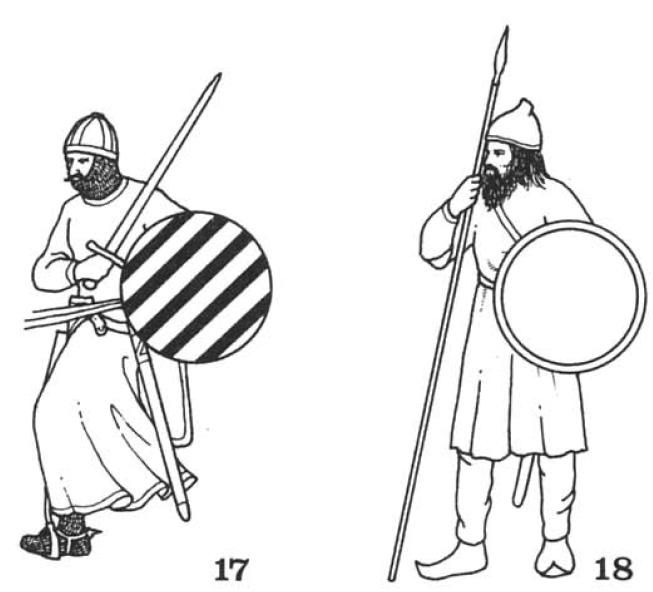
Also many Armenians wore turbans, and all wore beards. Commonest infantry weapons were bow and spear. (Source: Armies and Enemies of the Crusaders 1096-1291 by Ian Heath)
Armenian Knights, unlike their Frankish counterparts, prefers simple helms, like the one in this pic:

Also many Armenians wore turbans, and all wore beards. Commonest infantry weapons were bow and spear. (Source: Armies and Enemies of the Crusaders 1096-1291 by Ian Heath)
That's it. Hope it's helpful. Now I will move onto working on the Ayubids and the Levant area, which will take time. I will also update the existing factions I worked on whenever I come across more info about them. If there is a gap in my research, please point it out so I can rectify it.
Happy New Year Everyone!

















